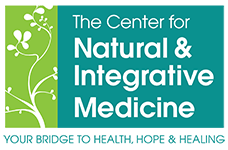
It is a well known fact that many medical advances such as mammograms, MRI’s, colonoscopies and drugs that reduce cholesterol and blood pressure, have saved lives and eased suffering for millions of people. But experts estimate that the U.S. spends hundreds of billions of dollars every year on medical procedures that provide no benefit or can be a substantial risk of harm. This suggests that Medicare could save both money and lives if it stopped paying for some common treatments.
Some of the same health care that helps certain patients can, when offered to everyone else, be useless or even detrimental. Many of the 500,000 elective angioplasties performed every year are done on patients who could benefit more from drugs, exercise, and healthy eating. From PSA tests for prostate cancer to surgery for chronic back pain to simple antiobiotics for sinus infection, a remarkable number and variety of tests and treatments are now proving either harmful or only as helpful as a placebo.
The common way of thinking for some doctors has been that if a treatment works in severe disease it will work in milder disease. But that is not necessarily so. One example is Antidepressants which have been shown to help with severe depression but not with moderate or mild depression, yet are widely prescribed for those conditions. Proton Pump Inhibitors (PPIs) are effective against gastric reflux and rare esophageal diseases, but 50-70 percent, of the U.S. prescriptions for PPIs each year are for conditions they don’t help, such as regular stomachaches. Statins are effective with both heart disease and high cholesterol, but not very effective for those with just high cholesterol. The drugs are nevertheless widely prescribed to patients who fit the latter description, despite adverse effects.
CT scans and MRI’s are also used more than may be necessary. An MRI typically costs about $3,000 and is designed to spot everything from bulging discs to hairline fractures. Typically if a problem is found, surgery is the answer. But there’s a fundamental flaw: clinical trials have shown that back surgery, including vertebroplasty and spinal fusion, is no more effective at alleviating ordinary pain than basic rest and mild exercise. “Our imaging and diagnostic tests are so good, we can see things we couldn’t see before,” says Michael Lauer of the National Heart, Lung, and Blood Institute. “But our ability to understand what we’re seeing and to know if we should intervene hasn’t kept up.”
Low-tech tests should sometimes be avoided, too. In the Archives of Internal Medicine, a panel of physicians recently announced its first list of tests and treatments that should be dropped altogether for certain patients and ailments: antibiotics for sinus infections, imaging for low back pain, osteoporosis screening for women under 65, and electrocardiograms and other cardiac screening in low-risk patients.
The physicians that are following this line of thought are not anti-medicine; They are not trying to save money on their copayments or deductibles and they are not trying to cut down the nation’s soaring health-care costs. They are applying to their personal lives a message they have become increasingly vocal about in their roles as biomedical researchers and doctors: more health care often means worse health. “There are many areas of medicine where not testing, not imaging, and not treating actually results in better health outcomes,” says Dr. Rita Redberg, Professor of Medicine at The University of California. In other words, “less is more.”
Many doctors don’t seem to be getting the message about useless and harmful health care. Medicare pays more than $100 million a year for screening colonoscopies; some 40 percent are for people in whom they will almost certainly harm more than help. Arthroscopic knee surgery for osteoarthritis is performed about 650,000 times a year; studies show that it, too, is no more effective than placebo treatment, yet taxpayers and private insurers pay for it.
The bottom line is to educate yourself about any procedures or medication prescribed and ask your doctor questions about alternative treatments and options. Ensure that the tests and medication being prescribed are necessary and in your best interest.
“We’re killing more people than we’re saving with these procedures,” says Dr. James Goodwin, a geriatrician at the University of Texas Medical Branch. “It’s as simple as that.”

